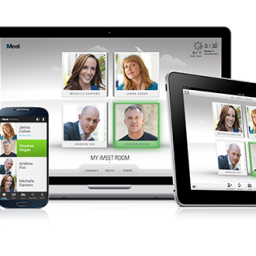Original Post by John Perkins
Email may have pioneered virtual communications, but now, there’s a better way to manage projects, share files, send updates, centralize information, archive conversations and connect teams. Collaboration software, online project management and team workspaces are not only helping evolve teamwork but also solving our biggest problem with email: noise.
Back-and-forth conversations and long email threads no longer permeate employees’ inboxes. Now, instead of seeking an “Inbox Zero” utopia, workers are rerouting teamwork and communication to these new alternatives, and some teams are using them to abandon email altogether.
As revolutionary as collaboration software is, I see businesses making two huge mistakes when buying these solutions.
Mistake #1: Replacing Everything With Collaboration Software
Online collaboration solutions and team workspaces like these have helped my IT team commit to agile, have discussions they can’t in real time, seek out feedback and create a repository of documents and sprint retrospectives. The one we use is so simple and customizable, we even built an entire database of projects in hours that I can send in response to status inquiries. Even with that robust functionality, our application is not a magic bullet that replaces every other type of asynchronous and synchronous collaborative activity.
Think about the way we meet in person at the office. We don’t book a conference room every time we need to collaborate, but we’re also not going to show up at our co-workers’ desks unannounced every time we have an update. Likewise, we need a variety of virtual places to meet and collaborate to better serve the variety of conversations and personalities involved.
Buying collaboration software shouldn’t simply be a matter of assessing what it replaces. Instead, businesses need to also understand how it enhances and complements other virtual communication and how seamlessly users can initiate and integrate collaboration solutions such as online meetings, conference calls and, yes, even email.
Email was not the be-all and end-all for collaboration, but neither are these new alternatives. The way businesses have used email for every type of communication is all wrong, and companies are just repeating that mistake by approaching collaboration software with the same mentality.
 Mistake #2: Not Factoring Email Into the Buying Decision
Mistake #2: Not Factoring Email Into the Buying Decision
As an “email alternative,” collaboration software appears to be a replacement instead of supplemental product to first-time buyers. In reality, most workers still and will continue to use email for sending and receiving official communication, overseeing collaborative activity, privately communicating with people outside the company and even to verify other accounts.
When businesses don’t consider how collaboration software will impact inboxes in the buying decision, they’re doing employees a disservice. Email alternatives let workers bypass email initially, but sooner or later, all of that activity boomerangs back to inboxes.
When someone updates the status of a task, users get an email. When someone changes a deadline, users get an email. When someone comments on a file, users get an email.
Users are notified of direct messages missed, when someone moves a document, of new assignments and when deadlines get close. Over time, users accumulate hundreds of emails from asynchronous applications, and eventually workers have to filter everything out because they, too, are now noise.
To ensure email alternatives doesn’t cause even more inbox chaos, businesses need to better assess the notification features. For example, are immediate notifications the default, or do workers have to opt in?
One of the key functionalities within our application is the daily digest. Instead of flooding my inbox with immediate email notifications for all new activity, our application drops one email. It sends a single, aggregated, daily notification in the morning with a synopsis of all new activity across my workspaces and groups.
In addition, for every activity and space within the application, I have an option to receive emails and notify subscribers. If I were to be automatically notified of everything, I’d have trouble determining what coming out of that application really matters. This way, I get to decide what’s important for me.
Asynchronous collaboration solutions will increasingly be the new way we all work, and businesses need to figure out now how all of our tools should work together before remote teams multiply.
Stay connected! Click here for more info



